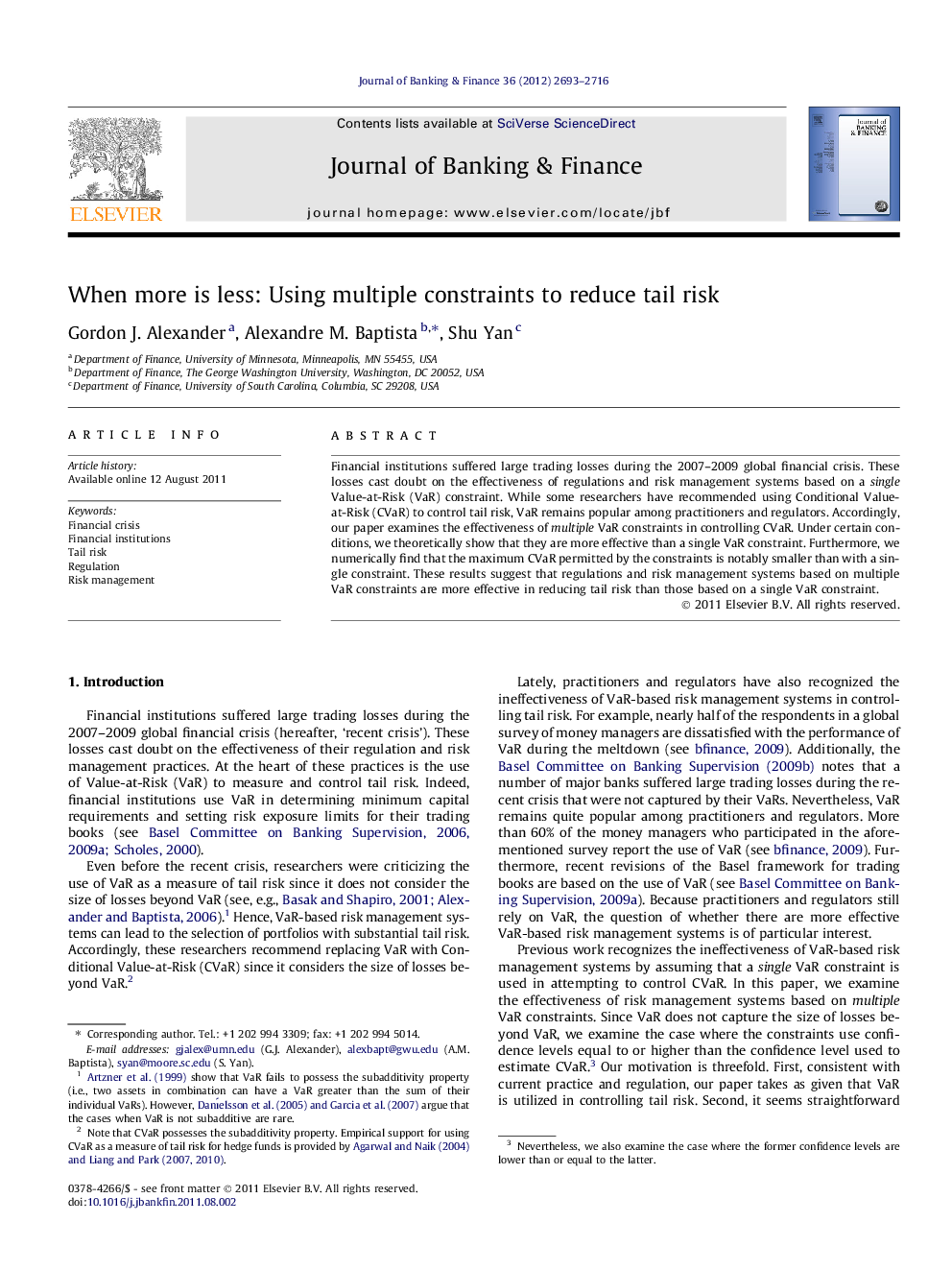| Article ID | Journal | Published Year | Pages | File Type |
|---|---|---|---|---|
| 5089633 | Journal of Banking & Finance | 2012 | 24 Pages |
Financial institutions suffered large trading losses during the 2007-2009 global financial crisis. These losses cast doubt on the effectiveness of regulations and risk management systems based on a single Value-at-Risk (VaR) constraint. While some researchers have recommended using Conditional Value-at-Risk (CVaR) to control tail risk, VaR remains popular among practitioners and regulators. Accordingly, our paper examines the effectiveness of multiple VaR constraints in controlling CVaR. Under certain conditions, we theoretically show that they are more effective than a single VaR constraint. Furthermore, we numerically find that the maximum CVaR permitted by the constraints is notably smaller than with a single constraint. These results suggest that regulations and risk management systems based on multiple VaR constraints are more effective in reducing tail risk than those based on a single VaR constraint.
⺠Financial institutions suffered large trading losses during the 2007-2009 crisis. ⺠These losses cast doubt on regulations based on a single VaR constraint. ⺠We examine the effectiveness of multiple VaR constraints in controlling tail risk. ⺠Under certain conditions, they are more effective than a single VaR constraint. ⺠We suggest that regulations based on multiple VaR constraints will be more effective.
